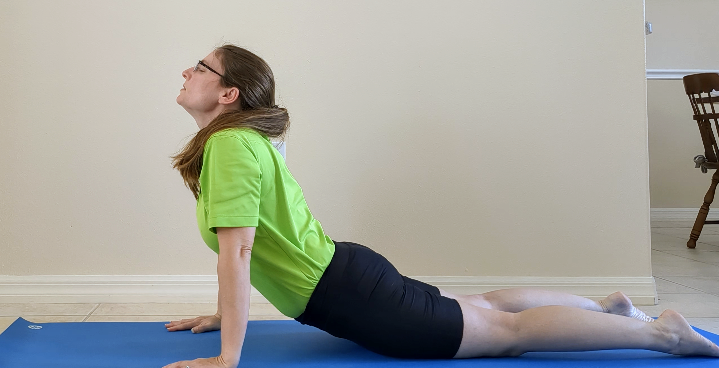Start here...This will give you an overview of the entirety of yoga

Just know that the poses you get into are what YOUR body allows; it doesn't have to look like the very flexible teacher from a class.

There are 5 Yamas or moral disciplines that allow us to live in peace. They are primarily focused on the world around us and our interaction with it.

There are also 5 Niyamas or duties that we are to follow. Whereas the Yamas are primarily focused on the world around us and our interaction with it, Niyama is more internally focused.
This quick overview of the 5 Yamas is less than 10 minutes and will give you a synopsis of each of the Yamas.
Ahimsa is the first Yama. Ahimsa is non-violence. It is not about passively ignoring wrongdoings of others, but about bringing peace to oneself and one's world by engaging in non-violence in action and thought. Several ideas are provided on how you can more deeply integrate this Yama into your life.
Satya is about being truthful in your words, actions, and intentions. It can be hard to do without criticism at times, which is why we practice Ahimsa first. Several ideas on how to more deeply integrate this Yama into your life are provided.
Asteya translates to non-stealing. This is in terms of our words and actions towards ourselves, others, and the environment. This video will give you a deeper overview of Asteya and how to incorporate it into your life.
Brahmacharia translates to "right to use energy" or "non-excess". Traditionally it was about sexual energy, but in general it helps us live in moderation.
Aparigraha is an excellent tool for managing anxiety as it translates to non-possessiveness or non-attachment. When we learn to release the thoughts, emotions, and body sensations associated with anxiety that do not serve us, we are able to enter a state of peace.

Patanjali’s alignment instruction for asana is “sthira sukham asanam” which means “the posture should be steady and comfortable.” The purpose of getting into poses is to be comfortable in them and not uncomfortable or restless.

Pranayama can be used in two ways. Prana is energy or life source. Yama means restraint. So pranayama can be thought of as energy restraint – being at peace and calm through deep diaphragmatic breathing such as Ujjayi breath. Ayama means expansion. So Pranayama can also mean expansion of life force through breathwork such as Bhastrika Pranayama.
This is my first recorded yoga video and is a gentle flow to release stored anxiety and trauma in the body. You won't need any equipment for this practice, but feel free to grab a yoga mat, a pillow, bolster or blanket for shavasana at the end, some water, and a block or book and strap or belt or towel to make any of the moves easier.
Bhastrika Pranayama is a stimulating breath which is useful when you're feeling low on energy or having a hard time settling into calming breathwork and need to align with the fight/flight.
This gentle 20 minute yoga for releasing hip tension is great at the end of the day.
This is a great place to start with alternate nostril breathing. If you are new to this type of breath practice, this class will give you the basics in a way that keeps your fight/flight at bay.
This 20 minute yoga session will help you reconnect to your body. Often with trauma and anxiety we disconnect from our bodies. Our bodies are tight or numb and we are not truly aware of it because it has become normal for us.
Wake up your mind and body with this energizing yoga flow.
This 15 minute gentle yoga for hip tension release is great after a long day of sitting or first thing in the morning when we are still tight from sleeping.

This limb is about getting so absorbed by what we’re doing that we don't notice other things. We’re in complete connection with what we’re focusing on. It's what many of us describe as mindfulness.

This limb of yoga is connected to Pratyahara and is when we are so deeply connected that we're withdrawing our senses from the external world. It's what many of us think of as meditation. Visualization and focusing on your breath are two examples.

Dhyana happens when Pratyahara and Dharana are so in sync. This is when we are truly meditating. Thus, meditation or Dhyana is not so much an action as a result of Pratyahara and Dharana being in sync.

Samadhi means bliss or enlightenment. Once we’ve successfully worked through our blocks and have a new relationship with ourselves and the world around us, we can enter samadhi. By not allowing our experiences to be biased or judgmental and not attaching to any particular aspect of life, we allow things to just be as they ARE. Life is seen for what it is.
Information, thoughts, inspiration, and more
In yoga, we talk about Ahimsa — the principle of non-violence, not just toward others but also toward ourselves. Starting my coaching business brought me face-to-face with some of the most challenging chapters of my life. This video will share with you how important ahimsa is for me in letting go of the guilt and shame I carried for so long.
As therapists, it is hard to take a break in your day and re-center yourself. However, we also know just how important this is. Grounding and centering throughout the day will decrease the risk of stress and burnout
